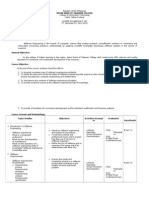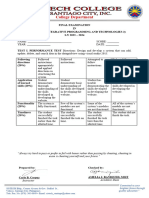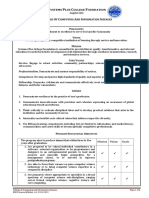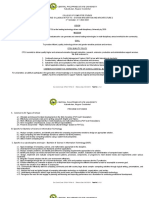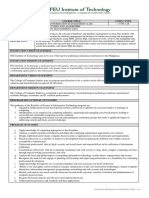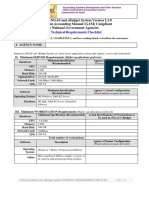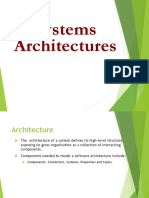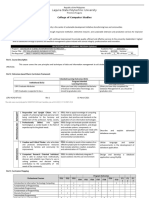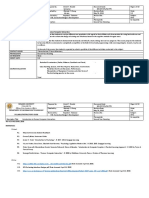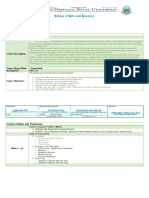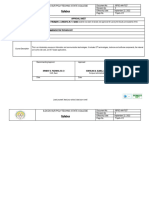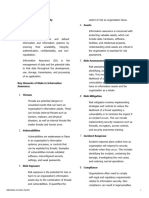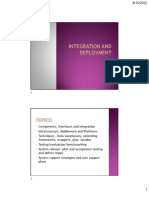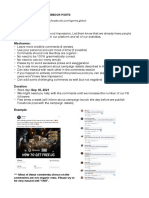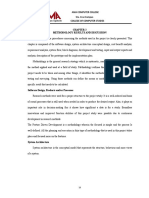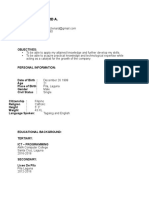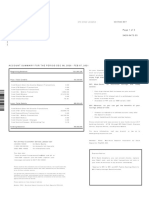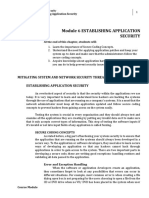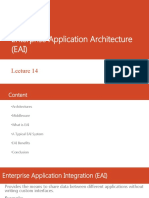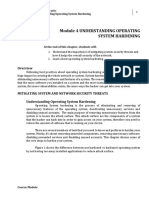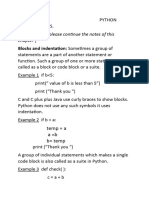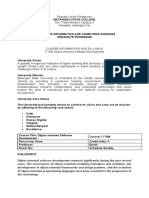Integration and Deployment
Lecture 12
Topics:
•Components, interfaces and integration
•Infrastructure, Middleware and Platforms
•Techniques – Data warehouses, extending frameworks, wrappers, glue, facades
•Testing/evaluation/benchmarking
•System release: pilot and acceptance testing and defect repair
•System support strategies and user support plans
learning outcomes:
• Define integration in terms of components and interfaces.
• Give examples of middleware platforms.
• Discuss some advantages and disadvantages of some middleware platforms.
• Describe the major considerations for enterprise integration platform selection.
• Give an example of integration using the “wrapper” approach.
• Give an example of integration using the “glue code” approach.
• Give an example of how a framework facilitates integration of components.
• Explain how the data warehouse concept relates to enterprise information integration.
• Give examples of how testing and evaluation are impacted by integration choices.
SYSTEM INTEGRATION (SI)
SI is essential to the development of large, complex engineered systems.
It is used for melding existing systems and new technologies to form more capable systems that are
intended to take on additional tasks, exhibit improved performance, and/or enhance existing systems.
SI requires the coordination of preexisting and coexisting system components with newly developed
ones
SI ensures that specific hardware/software components fit together smoothly in a stated configuration
SI is a logical, objective procedure for applying new and/or expanded performance requirements in an
efficient, timely manner to the design, procurement, installation, and operation of an operational
configuration consisting of distinct modules (or subsystems), each of which may embody inherent
constraints or limitations.
Key Terms
Logical, Objective Procedure. The SI process is clear to external observers
and all steps have a built-in audit trail.
Efficient and Timely. The SI process will not be unduly burdened with
delays and bureaucratic procedures that increase cost to the client and
delay deployment of the system.
Design, Procurement, Installation, and Operation. The SI process will be
employed throughout the entire process.
Key Terms…Cont…
Distinct Modules with Inherent Limits or Constraints. The
concept of distinct modules with inherent limits or constraints is
central to the concept of SI. SI is necessary when the configuration
to be deployed includes devices with intimate connections to other
devices previously deployed or to be deployed under a later
procurement, particularly if these devices were designed and
constructed de novo by subcontractors with only partial design
responsibility for the overall system.
Objectives of Systems Integration Methodology
The objectives for a systems integration engineering methodology can be stated
as follows:
1. To support problem understanding and communication between all parties at all
stages of development.
2. Enable capture of design and implementation needs early, especially interface
and interactive needs associated with bringing together new and existing
equipment and software.
3. To support both a top-down and a bottom-up design philosophy.
Objectives of Systems Integration Methodology -2
4. To support full compliance with audit trail needs, system-level quality
assurance, and risk assessment and evaluation.
5. To support definition and documentation of all aspects of the program.
6. To provide a framework for appropriate systems management application to
all aspects of the program.
SI Personnel Needs and Technical Areas
The client must define the SI requirements, specifications, constraints,
and variables in a manner so as to provide the means for a SI
organization to deliver the necessary systems and services required to
fulfill the client mission under the specific contract
SI requires personnel who possess sound technical and management
skills that combine to provide the ability to integrate technology and
operations with technical and managerial direction.
Role of Systems Integration in Large, Complex Engineered
Systems
Development and utilization of a strategic plan for management and technical aspects
of the program;
Establishment of a complete audit trail;
Assistance in meeting initially unrecognized needs (including changes in system
requirements);
Avoidance of under- and over-procurement; and utilization of risk management plans;
Management of subcontractors to the same specifications as employed on the prime
contract; and
Provisions for future modification and expansion.
SYSTEMS INTEGRATION LIFE CYCLE
Requirements definition and specification
Feasibility analysis
System architecture development
Management plan: program and project plan
Systems design: logical and physical design
Implementation: design implementation, system tests, and operational deployment
Evaluation: system review and plan for replacement/retirement
Requirements Definition and Specifications
Definition of requirements by use
Review of requirements for ambiguity, conflict, and other issues
Development of systems specifications
The goal for requirements definition and specification is to completely define
and correctly interpret the client's real needs.
Systems Design
•Logical and Physical Design
•Design approaches (e.g., top-down, bottom-up, etc.)
•Use of CASE tools and other automated aids
Implementation
•Design Implementation, System Tests, and Operational Deployment
•Identify technical configuration
•Specify required configuration component items
•Procurement from subcontractors
•Perform system tests
•System deployment
SI implementation




